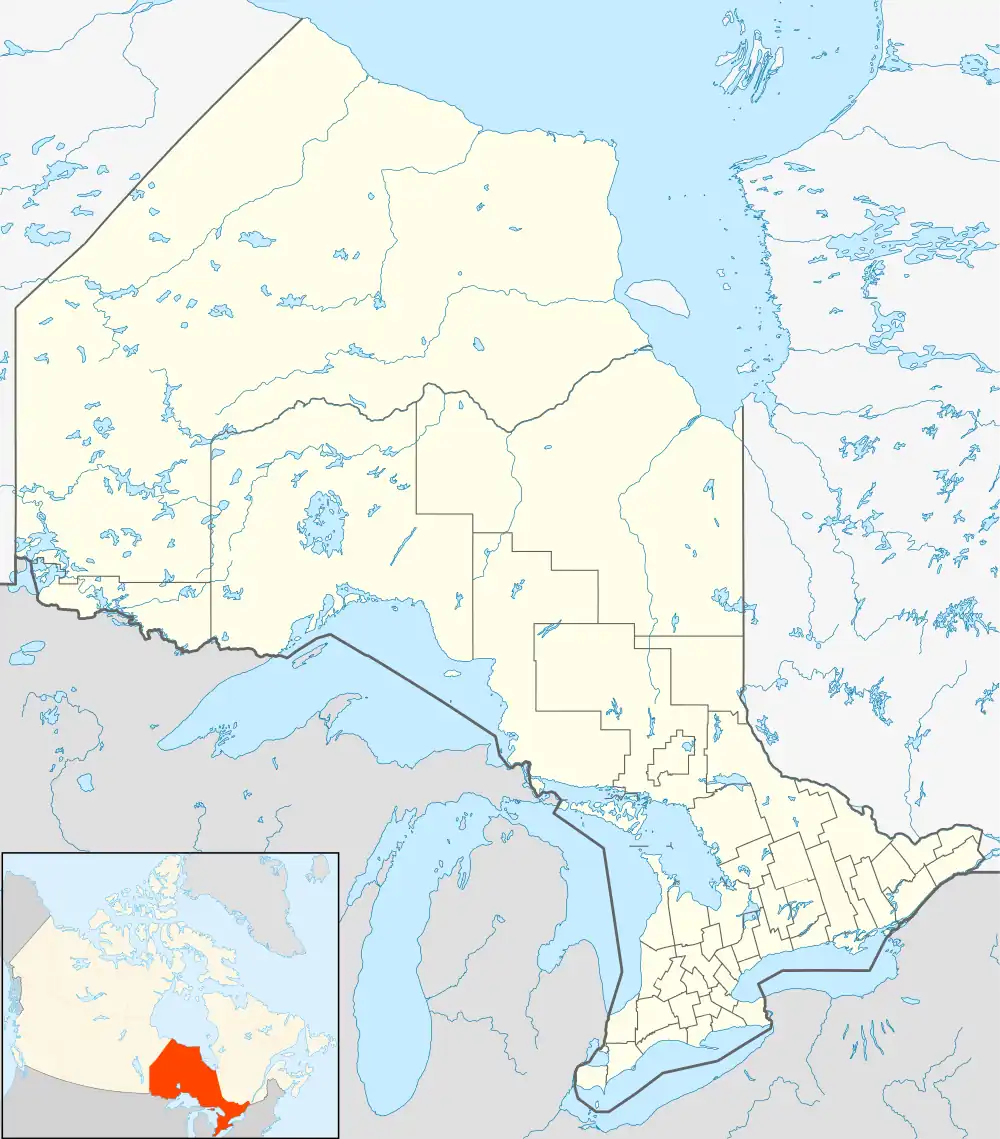Agnew Lake Mine
The Agnew Lake Mine was a uranium mine located in the township of Hyman[2] approximately 10 kilometres (6.2 mi) northeast of Agnew Lake, Ontario and 75 kilometres (47 mi) east of Elliot Lake, Ontario.
| Location | |
|---|---|
 Agnew Lake Mine Location in Ontario | |
| Location | Agnew Lake |
| Province | Ontario |
| Country | Canada |
| Coordinates | 46°25′53″N 081°37′38″W |
| Production | |
| Products | Uranium (U3O8) |
| Production | 181,417 kilograms (399,956 lb)[1] |
| Financial year | 1978 |
| History | |
| Opened | 1977 |
| Closed | 1983 |
| Owner | |
| Company | Kerr Addison Mines Ltd. |
History
90 holes were diamond drilled by New Thurbois Mines Limited in 1954 to 1955.[2] In 1956, Canadian Thorium Corporation Limited purchased the site and completed ground geophysics and mapping.[2] Kerr Addison Mines Limited and Quebec Mattagami Minerals continued to develop the site in 1965 to 1967.[2] Agnew Lake Mines Limited bought the property in 1967 and continued the property development, and started mining.[2] The mine began producing uranium in 1977, utilizing both underground and surface mining techniques.[3] Agnew Lake was the first biohydrometallurgy mining operation. Underground mining was done via sublevel stoping, with oversize rock skipped to surface via a shaft, bioleaching was carried out both underground and on surface stockpiles to produce Triuranium octoxide (U3O8). By the end of 1980 underground mining stopped, and by 1983 the mine closed.[4]
The Agnew Lake mine site was decommissioned, buildings removed, and the shaft capped. Monitoring of the site was carried out by Kerr Addison between 1983 and 1988, with the property being turned over to the Ontario government in the early 1990s.[5]
In 2005 and 2006 472m of diamond drilling was completed by Ursa Major Minerals Incorporated.[2] Nyah Resources Incorporated did seven more diamond drill holes in 2007.[2] In 2017, Skead Holdings Incorporated did a ground geophysical survey.[2]
Geology
The uranium mineralization at Agnew Lake is contained within a pyritic quartz-pebble conglomerate that unconformably overlies granitic rocks.[4] This is similar to the style of mineralization found in the Elliot Lake uranium camp.
See also
References
- Margesin, Rosa; Schinner, Franz (2012). Biotechnological Applications of Cold-Adapted Organisms. Springer Science & Business Media. ISBN 9783642586071.
- "Ontario Mineral Inventory Record MDI41I05NE00009: Agnew Lake Mine, Canadian Thorium Corporation Limited Property". www.geologyontario.mndm.gov.on.ca. Retrieved 2021-11-26.
- Zhou, Yong (2013). Uranium and Nuclear Energy: 1981: Proceedings of the Sixth International Symposium Held by the Uranium Institute, London, 2 – 4 September, 1981. Butterworth-Heinemann. p. 198. ISBN 9781483162096.
- Canadian Mining Journal (2005). "URANIUM EXPLORATION – Former Agnew Lake mine to get another look". Retrieved 2017-12-19.
- Canadian Nuclear Safety Commission. "Uranium mines and mills waste". Retrieved 2017-12-19.